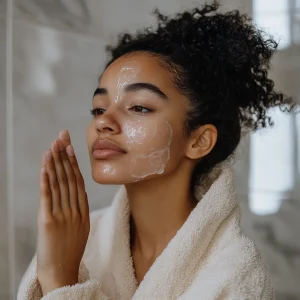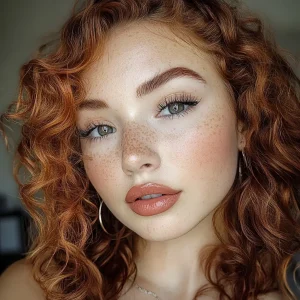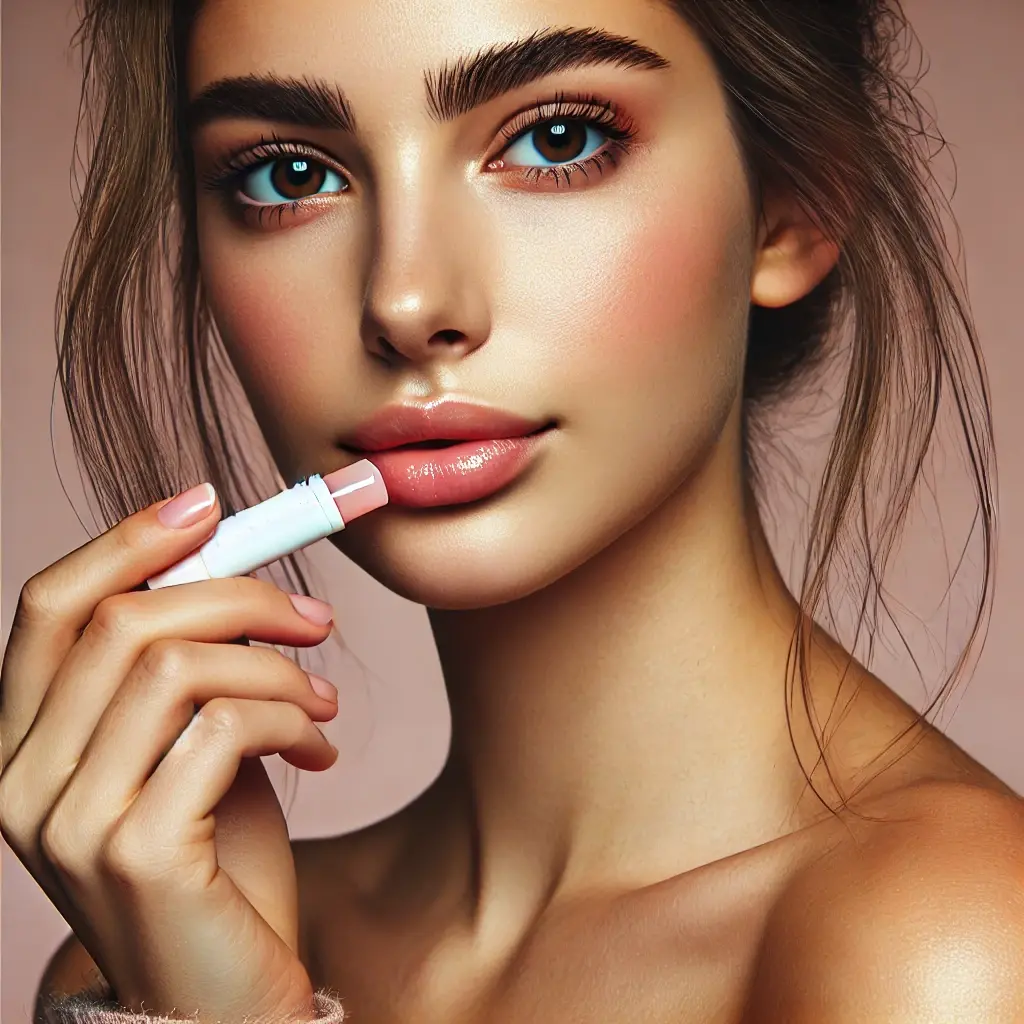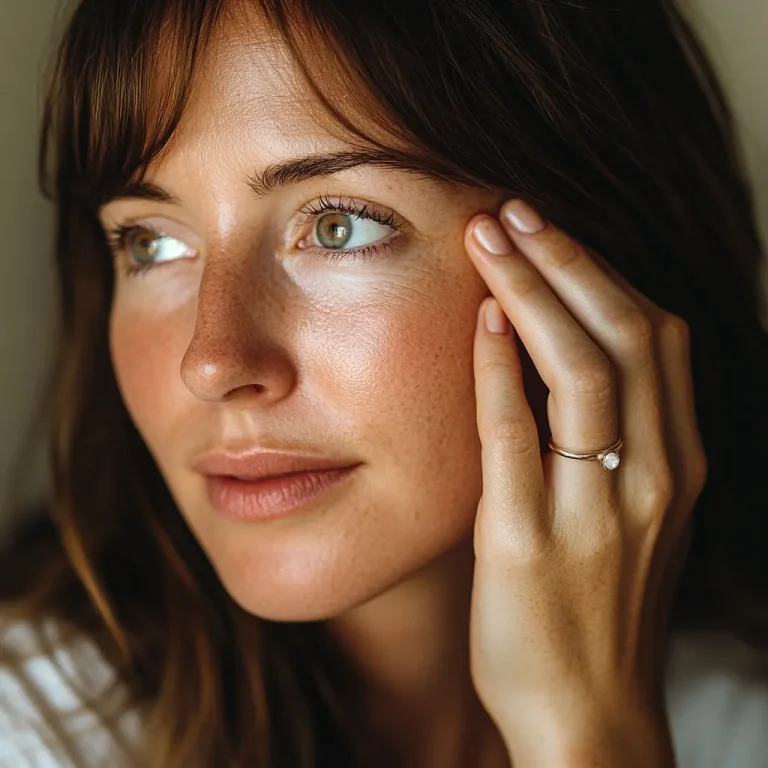Who doesn’t want soft, naturally pink lips? They add a touch of freshness to your face and give you that healthy, well-cared-for look. Unfortunately, many of us struggle to maintain that natural pinkness due to daily habits, environmental factors, and even some of the beauty products we use. But the good news is, you don’t need heavy makeup or chemical treatments to bring out a natural, rosy glow! With the right approach, you can make your lips pink and healthy-looking with simple, natural steps.
In this guide, we’ll cover everything you need to know about restoring and enhancing your lip color. Whether your lips have become darker due to sun exposure, dehydration, or lifestyle choices, there are easy, effective ways to nourish and bring them back to life. From gentle exfoliation techniques to moisturizing tips and even overnight remedies, you’ll find plenty of methods that not only make your lips pink but also keep them soft and smooth.
We’ll also talk about some common factors that may be affecting your lip color and share lifestyle adjustments to help maintain that natural pink hue. So, if you’re ready to make your lips pink and luscious, let’s dive into these tried-and-true tips that are easy to add to your daily routine. Get ready to say goodbye to dull lips and hello to a fresh, natural glow.
Table of contents
- Why Do Lips Darken? Understanding the Causes
- Essential Steps for Making Your Lips Pink Naturally
- Natural Remedies to Make Your Lips Pink: Simple, Safe, and Effective
- 1. Beetroot – Nature’s Lip Tint for a Rosy Glow
- 2. Pomegranate Seeds and Milk – An Antioxidant Boost for Pink Lips
- 3. Aloe Vera Gel – The Soothing Solution for Bright, Healthy Lips
- 4. Rose Petal and Milk Treatment – The Floral Way to Naturally Pink Lips
- Lifestyle Changes to Make Your Lips Pinker and Healthier
- Frequently Asked Questions for How To Make Your Lips Pink
- Conclusion
Why Do Lips Darken? Understanding the Causes
Achieving and maintaining naturally pink, healthy lips isn’t always easy. Life gets in the way, and sometimes our habits or even the environment can cause our lips to darken over time. If you’ve noticed your lips looking dull, darker, or not as vibrant as they used to be, don’t worry! Understanding why this happens is the first step to turning it around. Let’s dive into some of the top reasons why lips lose their pink glow and what you can do to make your lips pink naturally.
Why Lip Color Matters for Beauty and Health
Lip color isn’t just about looks. The color and condition of your lips are actually strong indicators of overall health and wellness. Bright, naturally pink lips are often associated with good health, hydration, and self-care, while darker or unevenly pigmented lips can sometimes hint at issues like dehydration, exposure to harmful environmental factors, or even internal health concerns. When lips are darkened, it might be your body’s way of saying, “Hey, something needs a little TLC!” So, let’s break down the common culprits and what they mean.
Top Factors That Cause Lips to Darken
To bring back that natural pink shade, it’s important to know what might be causing your lips to darken in the first place. Once you know, you can tackle the problem head-on. Here’s what could be standing in the way of you and naturally pink, healthy lips:
- Sun Exposure: The Sneaky Cause of Pigmentation
We often remember to apply sunscreen to our face and body, but lips tend to get neglected. The skin on our lips is thin and highly sensitive to the sun’s UV rays. Just like our skin, lips can get sunburned, which leads to pigmentation and dark spots over time. If you spend a lot of time outdoors or even in a sunny office, this might be affecting your lip color more than you realize.
Quick Fix: Start using a lip balm with SPF daily, even if you’re indoors, to protect your lips from those harsh UV rays.
- Dehydration: The Key to Soft, Pink Lips
Dehydration doesn’t just make you feel sluggish; it also has a direct impact on your skin, including your lips. When you’re not drinking enough water, your lips can become dry, flaky, and pale. Think of hydration as the foundation of making your lips pink naturally. Without it, your lips just won’t look as soft and rosy as they could.
Quick Fix: Aim to drink at least 8 glasses of water a day, and try using hydrating lip products with ingredients like hyaluronic acid or aloe vera.
- Lifestyle Habits: Smoking, Caffeine, and Alcohol
Certain lifestyle habits—like smoking, drinking too much caffeine, or consuming alcohol—can seriously affect the color and health of your lips. Smoking is a major factor; the heat and chemicals in cigarettes stain the lips over time and reduce oxygen, making them look darker. Even caffeine, though we love it, is a mild diuretic, which means it dehydrates us, and alcohol does the same. Both can dry out your lips, causing them to look dull and lackluster.
Quick Fix: Cut back where you can, and consider replacing coffee with water or herbal tea. If you’re a smoker, every little effort to cut back helps, both for your health and for your lips.
- Harsh Beauty Products: Not All Lip Products Are Created Equal
Your favorite lipstick might be doing more harm than good if it contains harsh chemicals. Many lipsticks and glosses are formulated with drying ingredients like alcohol, artificial fragrances, or even lead (yes, unfortunately, it’s still in some products!). Over time, these chemicals can strip the natural color from your lips and make them appear darker or unevenly pigmented.
Quick Fix: Look for natural or clean beauty brands that use nourishing ingredients like shea butter, beeswax, or jojoba oil. Always remove lip products at night and give your lips a breather!
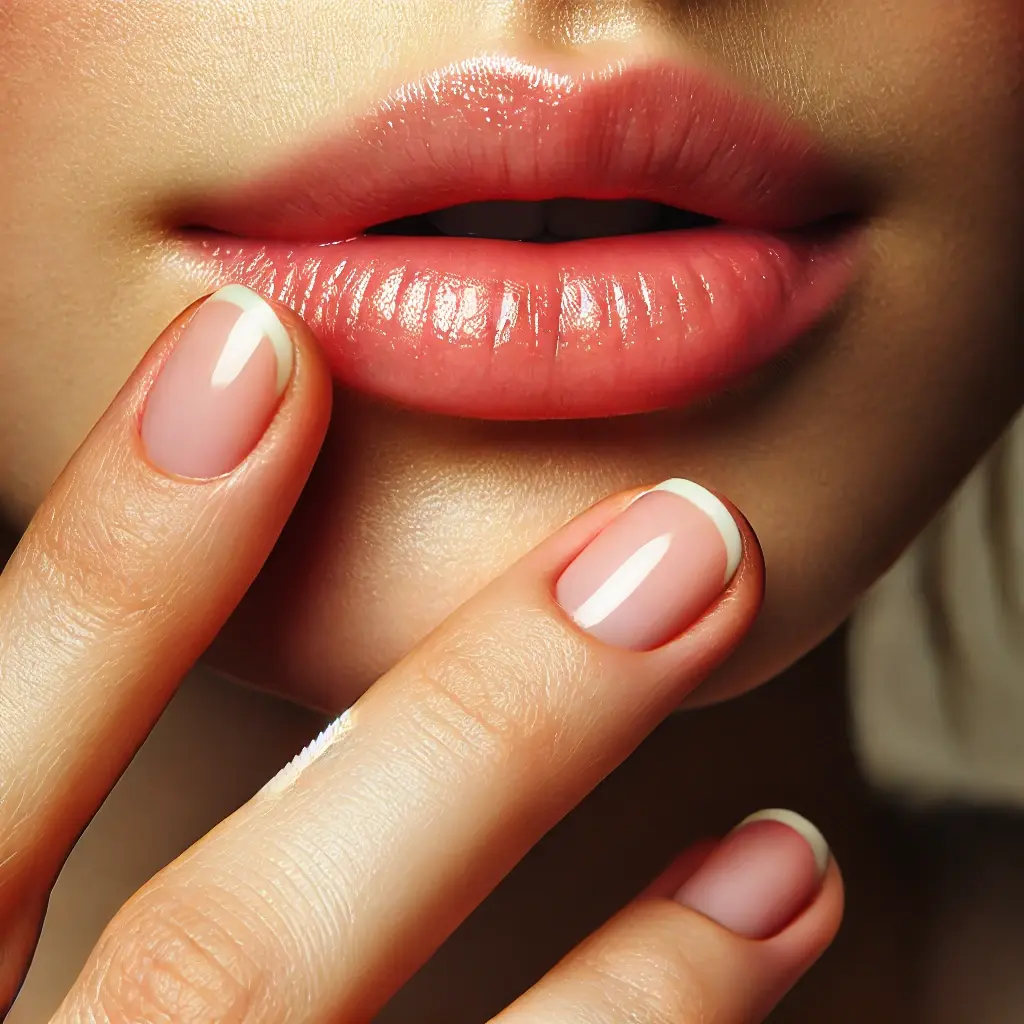
Essential Steps for Making Your Lips Pink Naturally
Achieving soft, pink lips doesn’t have to be complicated! Whether it’s a quick scrub, a nourishing balm, or a lifestyle tweak, these natural tips will have you on your way to rosy, healthy lips in no time.
1. Exfoliation – The First Step to Soft, Pink Lips
If you want to make your lips pink naturally, exfoliation is the way to start. Exfoliating helps remove the dead skin cells that build up on the surface of your lips, making them look dull and rough. Regular, gentle exfoliation reveals the fresh, pink skin underneath and leaves your lips feeling super smooth. Plus, it helps any moisturizing products absorb better, giving you a fuller, softer look.
DIY Exfoliating Scrub Recipe to Make Your Lips Pink
You don’t need to buy a fancy lip scrub when you can make an effective one at home with ingredients you probably already have! Here’s a super simple recipe:
- Mix one teaspoon of sugar with half a teaspoon of honey.
- Gently rub the mixture on your lips in small circular motions for about 1-2 minutes.
- Rinse with lukewarm water and apply a hydrating lip balm to lock in moisture.
Exfoliating once or twice a week is enough to see results—overdoing it can actually make your lips drier, so a gentle scrub every few days is just right.
Alternative Exfoliants: You can also try brown sugar or coffee grounds as they work well for exfoliating. Brown sugar is gentle and effective, and coffee grounds give a boost of antioxidants that can help rejuvenate your lips and make your lips pink.
2. Moisturizing – Keep Your Lips Hydrated and Pink
Moisturizing is key to keeping your lips soft, plump, and naturally pink. Hydrated lips look healthy and full, while dryness can make them look darker and chapped. So, after exfoliating, always follow up with a good lip balm.
Choosing the Right Lip Balm
Not all lip balms are created equal! To really make your lips pink and soft, look for balms with nourishing, natural ingredients that protect and moisturize:
- Shea Butter and Beeswax: These ingredients create a protective layer on your lips to lock in moisture and keep them hydrated.
- Cocoa Butter: Known for its deep moisturizing properties, cocoa butter also softens the lips, helping them look and feel their best.
- SPF Protection: Sun exposure can lead to darkening, so a lip balm with SPF will protect against harmful UV rays and help maintain that natural pink hue.
Top-Rated Lip Balms for Hydration and Protection
- Burt’s Bees Tinted Lip Balm: A popular choice, this balm has shea butter and beeswax for hydration and a subtle tint that enhances your lips’ natural pink color.
- Laneige Lip Sleeping Mask: This one’s an overnight treatment that’s perfect for deeply nourishing your lips, so you wake up to a softer, pinker pout.
- Aquaphor Lip Protectant + Sunscreen: Offering SPF 30 protection, this balm shields lips from harmful UV rays while providing essential moisture. It’s a practical choice for daily use, especially in sunny climates.
Pro Tip: Avoid balms with artificial fragrances or alcohol. These ingredients might smell nice, but they can actually dry out your lips, leaving them looking dull and rough.

Natural Remedies to Make Your Lips Pink: Simple, Safe, and Effective
If you’re looking for ways to give your lips a natural pink hue without makeup, these remedies are perfect! Packed with nourishing ingredients, they’re not only effective but also gentle on your lips. Let’s dive into some of the best natural options to make your lips pink, soft, and healthy-looking.
1. Beetroot – Nature’s Lip Tint for a Rosy Glow
Beetroot is one of nature’s best beauty hacks when it comes to pink lips! Its natural red pigments temporarily stain your lips a lovely rosy color, plus it’s full of antioxidants and vitamins that nourish your lips.
How to Use Beetroot for Pink Lips:
- Slice a piece of fresh beetroot and rub it gently on your lips for about one minute.
- Leave the beet juice residue on your lips for 15-20 minutes.
- Rinse it off with cool water.
Frequency: Try this 2-3 times a week to keep that pink glow alive. The color might fade after rinsing, but you’ll notice a subtle, natural pink tint.
Tip: You can also blend a bit of beetroot juice with a few drops of coconut oil to make a hydrating, tinted lip balm. Store it in a small container and apply it whenever you want a pop of color.
2. Pomegranate Seeds and Milk – An Antioxidant Boost for Pink Lips
Pomegranate seeds are rich in antioxidants that help brighten lips and lighten dark spots. When combined with milk, which has natural lactic acid, it becomes a mild exfoliating and moisturizing treatment.
How to Make a Pomegranate and Milk Paste:
- Crush a handful of pomegranate seeds to extract the juice.
- Mix the juice with a teaspoon of milk to create a paste.
- Apply the paste to your lips and let it sit for about 5 minutes.
- Rinse with lukewarm water.
Frequency: Use this remedy several times a week for best results. You’ll notice your lips becoming smoother and brighter, with a natural pink hue developing over time.
Fun Fact: Pomegranate seeds are also great for your skin and packed with vitamins C and K, so feel free to snack on them too for added beauty benefits!
3. Aloe Vera Gel – The Soothing Solution for Bright, Healthy Lips
Aloe vera is a fantastic natural remedy for lips that need a little TLC (or, in this case, a little “pinkening” love!). Known for its healing properties, aloe vera can help lighten pigmentation and soothe cracked or chapped lips, leaving them looking refreshed and rejuvenated.
How to Use Aloe Vera Gel for Pink Lips:
- Apply a thin layer of fresh aloe vera gel (from the plant or store-bought) on your lips.
- Leave it on for about 10-15 minutes.
- Rinse off with water or leave it on overnight as a lip treatment.
Frequency: Apply daily for best results, especially if you’re dealing with dark lips or pigmentation. Aloe vera’s calming effect is great for soothing and repairing lips, making them look healthier and more vibrant.
Extra Tip: Try mixing a few drops of rose water into the aloe vera gel for an added pinkening boost—it smells amazing and is super refreshing!
4. Rose Petal and Milk Treatment – The Floral Way to Naturally Pink Lips
Rose petals aren’t just beautiful to look at—they’re also packed with natural oils that help with hydration and pigmentation. When you soak them in milk, the petals release their nutrients, which work wonders on dry or darkened lips, making them appear softer and naturally pink.
Creating a Rose Petal Lip Mask:
- Take a few fresh rose petals and soak them in milk for 2-3 hours.
- Once soft, crush the petals into a smooth paste.
- Apply this paste to your lips and let it sit for about 15 minutes.
- Rinse off with lukewarm water.
Frequency: Use this treatment once or twice a week to see a gradual improvement in lip color and texture. Over time, you’ll notice your lips looking naturally rosy and smooth.
Pro Tip: If you’re feeling creative, you can add a bit of honey to the rose petal paste for extra hydration—it’s like a mini spa treatment for your lips!

Lifestyle Changes to Make Your Lips Pinker and Healthier
If you’re after naturally pink, soft lips, some simple lifestyle tweaks can make a world of difference. Here’s how a few adjustments can help restore and maintain that healthy pink glow on your lips.
Quit Smoking and Reduce Alcohol Consumption
Smoking and drinking both impact lip color in a big way. Smoking introduces toxins and reduces oxygen flow, leading to dull, dark lips. The nicotine and tar in cigarettes can even leave a lingering stain. Alcohol, on the other hand, can dehydrate your body and your lips, causing them to dry out and look pale or darker over time.
Tips for Healthier Choices: If quitting smoking or reducing alcohol feels like a big leap, try starting small. You could set weekly goals or slowly cut down. If you’re struggling, consider consulting a healthcare provider or a support group for some extra help. Even small steps toward cutting down can make a noticeable difference in brightening and restoring your lips’ natural pink hue.
Protect Your Lips From Sun Damage
Just like your skin, your lips need protection from the sun, too! The sun’s UV rays can lead to dark spots and pigmentation on your lips, making them look duller over time. Applying a lip balm with SPF can keep harmful rays from damaging that delicate skin and prevent further darkening.
Quick Tip: Even on cloudy days, the UV rays can still reach your skin, so a quick swipe of SPF lip balm is essential. Go for a product with at least SPF 15 for basic daily protection. You can learn more about sun protection in our article on How to Choose the Right Sunscreen for Your Skin Type?.
Eat a Balanced Diet for Healthier, Pinker Lips
What you eat has a huge impact on your skin and lips, as it affects hydration, elasticity, and color. To make your lips pinker, focus on vitamins and nutrients that support skin health, especially Vitamins C and E. These vitamins help boost collagen, which keeps your lips plump, soft, and naturally pink.
Here are some foods to add to your diet for pinker, healthier lips:
- Vitamin C-rich foods: Citrus fruits (oranges, lemons), bell peppers, strawberries, and kiwi are all loaded with Vitamin C, which helps repair skin and prevent discoloration.
- Vitamin E-rich foods: Nuts, seeds, and avocados are great sources of Vitamin E, an antioxidant that protects against oxidative stress and keeps your lips hydrated from within.
Eating a balanced diet rich in these nutrients supports not only pinker lips but also overall skin radiance. For more on nourishing foods that enhance skin and lip health, check out our article on Nutritional Tips for Glowing Skin.
Frequently Asked Questions for How To Make Your Lips Pink
How often should I exfoliate my lips to make them pink?
Exfoliating once or twice a week is ideal for most people. This helps remove dead skin cells without causing irritation, allowing the natural pinkness of your lips to come through. Be gentle and always follow up with a hydrating lip balm!
Can drinking more water actually help make my lips pink?
Absolutely! Staying hydrated is essential for maintaining soft, pink lips. When you’re well-hydrated, your lips are less likely to be dry or flaky, which helps them look naturally rosy. Aim to drink at least 8 glasses of water a day.
What’s the best way to protect my lips from darkening in the sun?
Use a lip balm with SPF protection daily, even on cloudy days. Sun exposure is one of the main causes of lip darkening, so an SPF balm helps protect and preserve your natural lip color.
How long does it take to see results with natural remedies like beetroot or rose petal masks?
Natural remedies take time, but with consistent use (2-3 times a week), you should start seeing a gradual pink tint within 2-4 weeks. These methods are gentle and safe, making them ideal for long-term lip care.
Will avoiding caffeine make my lips pinker?
Reducing caffeine can help! Caffeine is dehydrating, which can cause lips to dry out and appear dull. If you drink coffee or tea often, try to balance it out by drinking more water throughout the day to keep your lips hydrated.
Conclusion
Getting naturally pink lips doesn’t require expensive treatments or endless tubes of lipstick. It’s all about the right care, consistency, and a few simple, natural methods that make a real difference. From gentle exfoliation and hydrating with high-quality balms to adding nutrient-rich foods to your diet, each step you take can help make your lips pink and healthy.
Remember, achieving pink, soft lips is a gradual process. While you won’t see results overnight, sticking to a regular lip care routine can bring out that naturally rosy glow in just a few weeks. Plus, it’s rewarding to know that you’re enhancing your lips with safe, nourishing methods instead of covering them up with makeup.
So, why not get started today? Try some of these tips, like the DIY sugar-honey scrub or the beetroot tint, and see what works best for you. If you’re consistent, you’ll be enjoying the benefits of naturally pink, healthy lips before you know it.
Ready to start your journey to beautiful, pink lips? Bookmark this page, try out a few of these tips, and share your results with us in the comments below! We’d love to hear about your progress and any tricks that work especially well for you. Here’s to a new glow, one step at a time!
Related Articles on BeautyStyleMag
- 10 Best Lip Balms for Dry Lips for Soft and Hydrated Lips
- How to Make Your Lipstick Last Longer: Tips for Every Lipstick Lover
- How to Pick Best Lipstick Colors for Olive Skin Tone?
For more inspiration, check out reliable resources like webmd.com and Healthline.com for expert advice.

